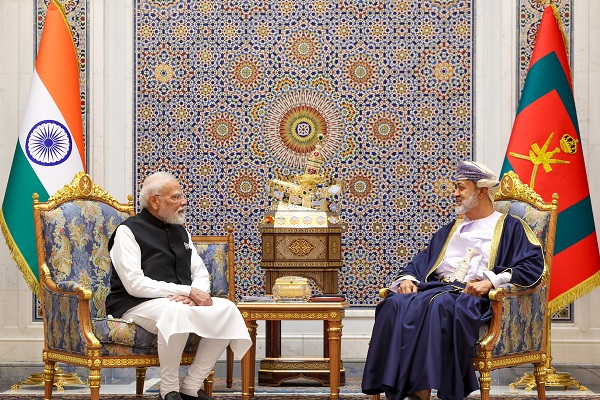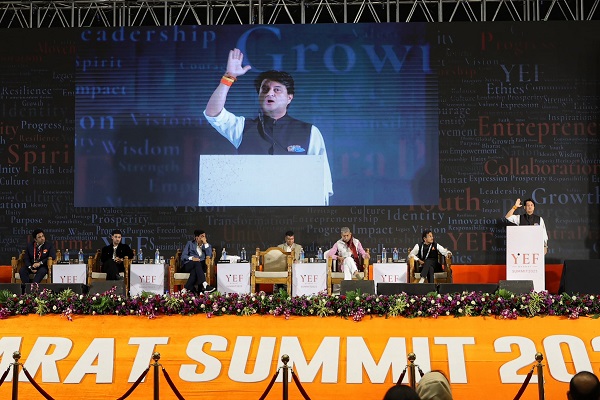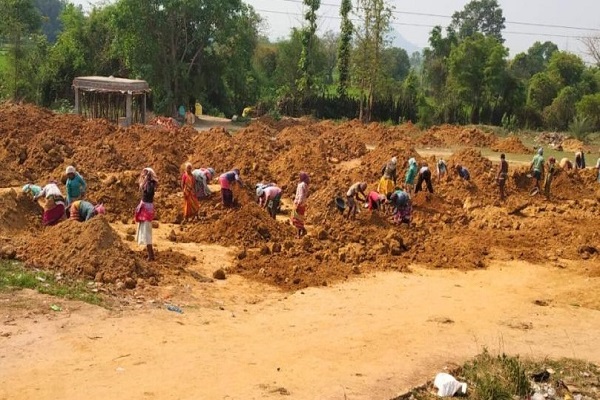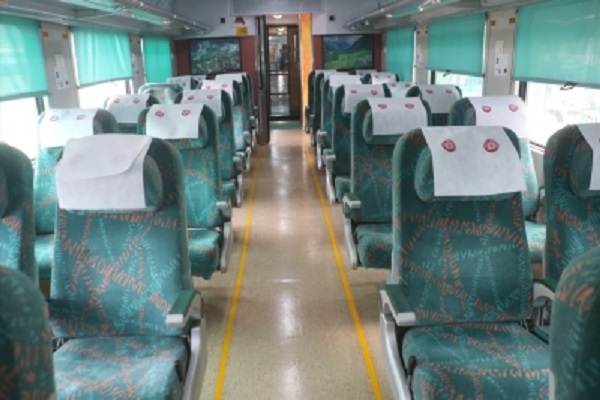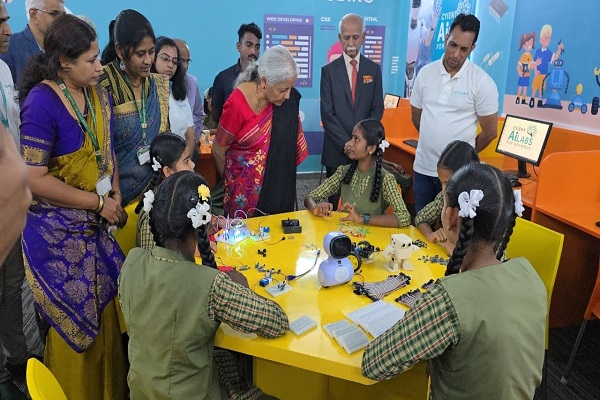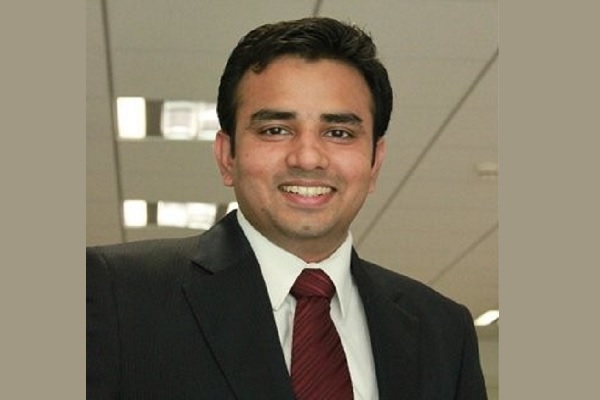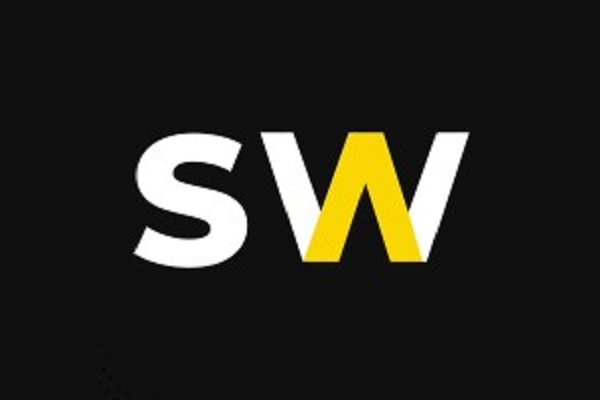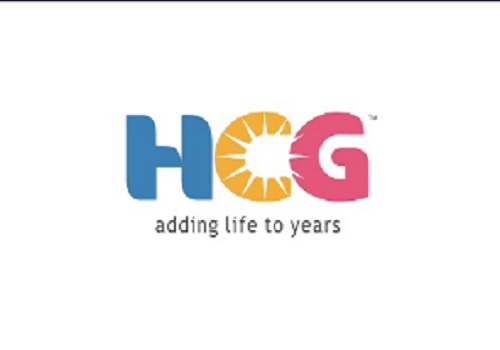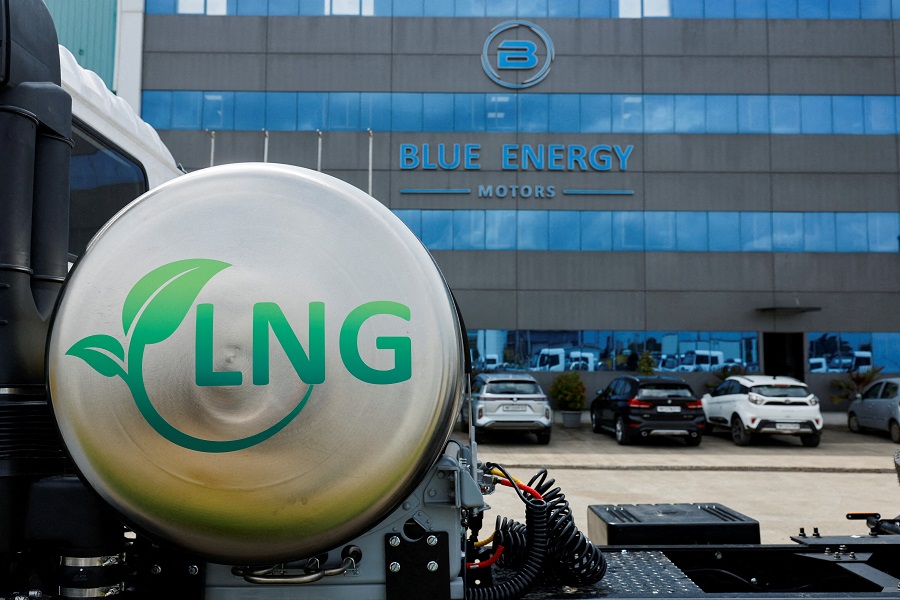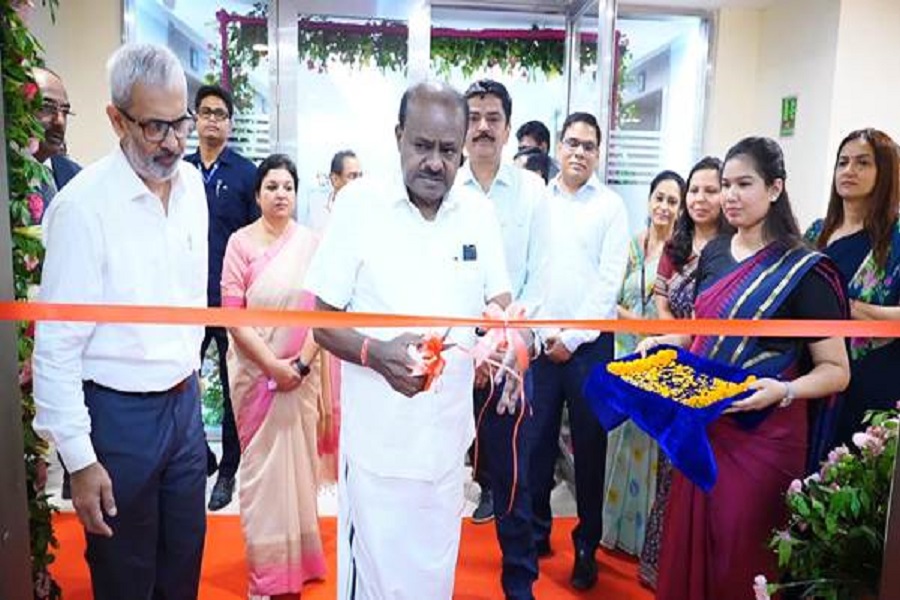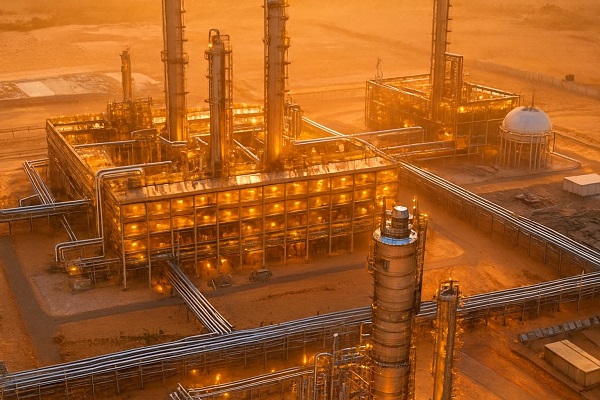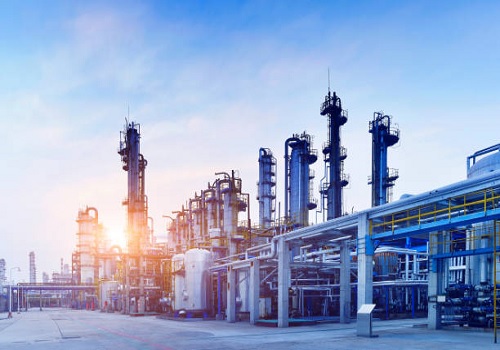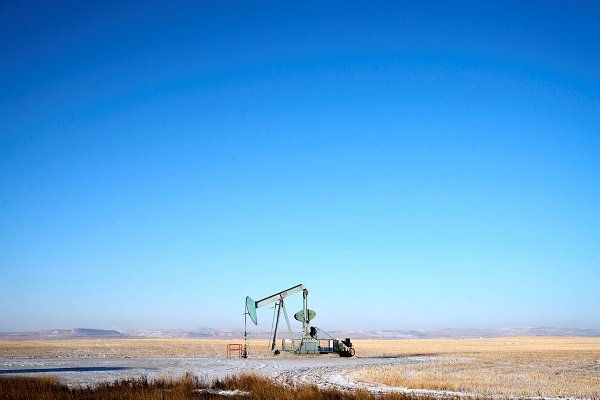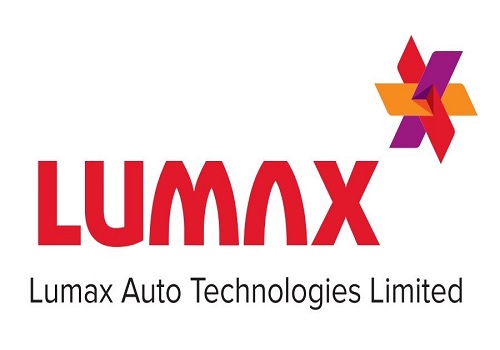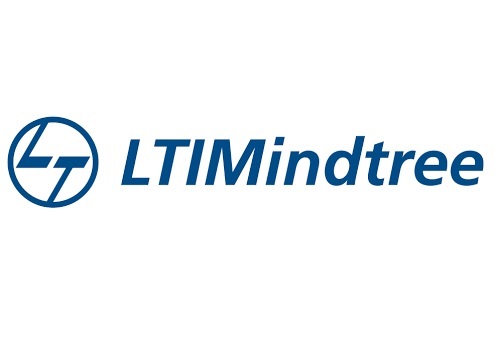Buy HPCL Ltd For Target Rs.500 by Emkay Global Financial Services Ltd

HPCL reported a 6% miss in Q1FY26 earnings, with standalone EBITDA/PAT at Rs76.7/43.7bn. However, core PAT was 3% above our estimate, driven by better marketing and a lower opex run rate. Inventory losses were higher, although core GRM of USD6.6/bbl was decent amid a lower Russian crude share (13% in Q1) and discounts. Reported GRM came in at USD3.1/bbl. Blended marketing margin rose to Rs9.3/kg, driven by autofuels and lower LPG underrecoveries (Rs21.5bn). Vizag refinery operated at 15mmtpa capacity with 111% utilization. HPCL’s outlook is steady despite geopolitical upheavals as Russian crude share is not sizeable; completion of Vizag Resid project by early Q3 should support GRMs, and the government approving a total of Rs300bn of LPG sector subsidy would lower debt by ~Rs80bn. Crude prices despite periodic volatilities is on average below USD70/bbl. We keep our estimates largely unchanged, building in USD70/bbl of Brent; we retain BUY with a TP of Rs500.
Results highlights
HPCL’s refining volume rose 16% YoY at 6.7mmt, with steady overall utilization at 109% vs 100% YoY. Distillate yield was slightly lower at 74% vs 75% QoQ. Domestic sales volume rose 1.6% YoY to 12.3mmt vs industry growth of 0.8%, with overall volumes up 3% YoY at 13.0mmt (in line). Exports grew 32% QoQ at 0.78mmt. Sale of petrol rose 5.6% YoY/diesel fell 0.9% vs industry growth of 7.1%/2.6%. Pipeline volume rose 1% QoQ to 6.7mmt (down 2% YoY). Total opex was up 5% YoY at Rs55.2bn (4% lower than our estimate). D/A declined 2% QoQ to Rs15.5bn, while interest cost grew 6% at Rs7.5bn. Other income of Rs5.2bn was at a 9% miss (down 34% QoQ; flat YoY). Share of loss from associates/JV stood at Rs1.1bn vs Rs3.5bn profit QoQ. Gross debt dipped 11% YoY and 19% QoQ at Rs510bn, while capex for Q1FY26 stood at Rs28.6bn.
Management KTAs
HPCL has not received any direction from the Indian government with respect to Russian crude sourcing; however, due to lower discounts, reduction would not have a significant impact. Vizag Resid project’s commissioning is likely by early Q3. Once stabilized by Oct/Nov-25, distillate yield would be up ~4% to ~83%. Barmer project is ~88% complete, with the refinery/petchem now 95%/73% finished. HPCL launched Project Samriddhi in May-25 – an EBITDA enhancement initiative targeting Rs10–15bn in savings by Mar-26, equivalent to ~USD0.6/bbl. In Q1FY26, the company achieved Rs2.5bn in savings. In addition, HPCL launched Project Abhyuday, focused on boosting throughput per retail outlet. Despite stronger cracks QoQ, core GRMs were slightly lower, primarily due to higher inventory of intermediate stock as diesel units were under maintenance.
Valuation
We value HPCL on an SOTP-EV/EBITDA-based method, with investment at a 30% holdco discount. We assign nil value to HMEL, offsetting the same with lower debt from LPG subsidy. We retain our blended target Mar-27E EV/EBITDA of 6.5x. Key risks: adverse pricing and margins, currency, government policies, and project issues.
Key Concall Takeaways
- Despite a volatile macro environment, driven by geopolitical turmoil and global supply chain disruptions, HPCL has maintained strong operational momentum, consistently delivering PAT of over Rs30bn in the past three quarters.
- Refining throughput rose 16% YoY to 6.66mmt, supported by capacity expansion at the Vizag refinery, which is now operating at its 15mmtpa nameplate capacity. HPCL is also focused on improving operational efficiency, having recorded its lowest-ever F&L in Q1FY26.
- HPCL is actively diversifying its crude basket and exploring innovative sourcing strategies. During the quarter, it processed four new crude grades and continued efforts to upgrade procurement processes and expand supplier participation. The share of Russian crude declined to 13.2% in Q1FY26 and the reduction was not due to any geopolitical reason but due to economic reasons. The company has not received any guidance or direction from the government for sourcing Russian crude. Further, due to lower discounts, reduction in the Russian share would not have a significant impact. Russian crude was processed only at Vizag refinery, while more cost-effective grades were sourced for the Mumbai refinery, including higher volumes from West Africa due to improved product realization and favorable landed costs.
- Pre-commissioning activities for the Vizag Bottoms/Resid Upgrade Project are underway, with OISD and PESO inspections completed. As a first-of-its-kind large-scale project, commissioning may take a few weeks, with likely completion by end-Q2FY26 or early Q3. Once stabilized (expected by Oct/Nov-25), the unit will enhance distillate yield by ~4% to ~83%. Additionally, operational optimization through natural gas usage (pending pipeline availability) is expected to support EBITDA uplift. Vizag refinery reported a loss in Q1FY26, primarily due to inventory losses.
- Once commissioned, the Resid Unit at Vizag refinery will allow HPCL to process a broader range of crudes, yielding collateral benefits across the value chain. Together with the Barmer refinery, HPCL will gain enhanced flexibility to handle dirty crudes, supporting better IRRs and overall value integration across the business. The company remains cautiously optimistic about the timely completion of the Barmer refinery.
- The Barmer refinery project is ~88% complete, with the refinery section now over 95% finished. 12 of 28 packages have already been commissioned, and safety and regulatory approvals are being processed. HPCL is targeting crude-in within the next few months, prioritizing refinery operations ahead of petchem. The petchem unit stands at 73% completion. While no significant hard cost escalations are expected, minor increases in project cost may arise due to working capital and interest-related expenses from delays. All the projects are on track. The LPG cavern is ready and awaiting motion control before feed-in.
- HPCL’s near-term priority is the completion of the Barmer refinery, after which operational optimization initiatives like debottlenecking are lined up. While petchem spreads have remained under pressure in recent years due to overcapacity, spreads are beginning to improve. With the highest petchem intensity (26%) among peers, the Barmer refinery is designed for high energy efficiency and cost-effective integration, ensuring low production costs. It also has scope to optimize intake crude cost.
- The four key strategic priorities are: 1) Enhancing operational efficiency; 2) Planning the next phase of growth; 3) Strengthening enablers such as manpower and digital transformation; and 4) Deepening external stakeholder engagement.
- To drive operational efficiency, HPCL launched Project Samriddhi in May-25—an EBITDA enhancement initiative targeting Rs10–15bn in savings by Mar-26, equivalent to a ~USD0.6/bbl benefit. The company is confident of achieving Rs10bn+ in savings, while aggressively pursuing the aspirational Rs15bn target. In Q1FY26 alone, the company achieved Rs2.5bn in savings, or 16% of the target, primarily through operational improvements.
- Project Samriddhi is a comprehensive initiative, encompassing multiple actions across the value chain such as optimizing product sourcing and logistics. HPCL is shifting from conventional methods to more efficient alternatives like leveraging coastal routes or others. On the sourcing front, the company has transitioned from procuring one cargo per week to four, significantly enhancing optimization. It has also upgraded digital tools to support improved decision-making and supply-chain efficiency.
- In addition, HPCL launched Project Abhyuday, focused on boosting throughput per retail outlet. Initiated two months ago, the project currently covers 4,500 outlets, with early results showing low single-digit KL improvement, which is expected to improve further. In line with this, the company has also upped dealer engagement and is dealing with a lot more dealers. While HPCL's per-outlet throughput currently trails BPCL, efforts are underway to narrow the gap. Expansion of the retail network is now governed by stricter internal metrics, with a focus on improving throughput, asset utilization, site selection, and network density.
- HPCL is also focusing on capital allocation with more stringent practices. The company aims to improve its Debt-to-Equity ratio and reduce leverage. Gross debt declined QoQ, largely due to seasonal reduction in short-term borrowings (typically elevated by Rs60– 80bn in Q4). While the Debt-to-Equity ratio was 1.01x in Q1FY26, FY26 levels may be slightly higher but are expected to remain within the guided range of 1.15x–1.2x.
- Despite stronger cracks and spreads QoQ, core GRMs were slightly lower, primarily due to higher inventory of intermediate stock (ISD). This was a result of diesel-converting units being under maintenance, leading to accumulation of ISD, which carries a lower valuation, thereby reducing the reported core GRM. However, the value of this stock is expected to be realized once processed in the following quarter. Further, refineries are complex assets, thus slight fluctuation happens here and there; however, HPCL is continuously looking at opportunities to improve and optimize and knows areas where it wants to improve. GRMs are expected to improve ahead, with the commissioning of the resid unit and benefits from ongoing operational initiatives.
- Operating a large and diversified customer base requires strategic inventory decisions, including carrying higher crude and product inventories as needed. During the quarter, amid geopolitical uncertainties, HPCL maintained elevated inventory levels, which led to higher inventory losses.
- HPCL reported a YoY decline in market share for diesel and gasoline, largely attributable to a high base in Q1FY25 (market share spiked to 5.5% in Q1FY25). However, it saw improved market share performance in July, attributed to sharpened focus on internal strengths and customer experience rather than competitors’ actions. HPCL’s strategy emphasizes increased dealer involvement, customer connect, and enhanced throughput. In industrial fuels, HPCL consciously opted to not pursue market share at the expense of margins, avoiding sales below RSP, unlike certain competitors with surplus volumes.
- Over the past few months, the company has been in active dialogue with the government regarding LPG subsidy and has submitted all required documentation. While it's uncertain whether the compensation will cover only FY25 or extend into FY26, HPCL is optimistic about a comprehensive, holistic resolution. Although the exact amount is unclear, HPCL, with a 27% market share in LPG, expects to receive a proportional share of any announced subsidy. A large portion of the subsidy, once received, is expected to be directed toward debt reduction, potentially bringing down leverage significantly.
- LPG under-recoveries stood at Rs109bn in FY25 and Rs21.5bn in Q1FY26. With Saudi CP trending lower—and a significant reduction seen in Aug-25—Q2FY26 under-recoveries are projected to decline by ~Rs10bn. Under-recoveries per cylinder in April, May, and June stood at Rs167, Rs164, and Rs155, respectively, and are expected to decline to ~Rs50/cyl in Sep-25.
- HPCL's ethanol blending currently stands at 19.95%, close to the government-mandated 20% target, which the company aims to fully achieve by FY26-end. While adhering to the mandate, HPCL is also pursuing optimization opportunities across ethanol sourcing and blending, including initiatives like rail-based logistics. Ethanol prices are based on feedstock and the company goes by government-listed price. The company is focusing on optimizing logistics, inventory management, and blending processes to improve efficiency within its controllable areas.
- Ethanol is priced slightly higher than retail petrol RSP, which exerts some pressure on marketing margins. As blending levels increase, margins may face some compression; however, the company remains committed to the government mandate and is actively working on improving operational efficiencies in ethanol management.
- Break water is not yet completed at the Chhara terminal, preventing cargo offloading during monsoons. However, from Oct-25, HPCL plans to handle four cargoes annually for itself, besides looking for spot cargo opportunities and exploring options to give out capacity to third parties. Breakwater completion is targeted for FY26, with expected terminal utilization of 10–15% in FY26, ramping up to 35–40% in FY27.
- CNG sales rose to 32tmt in Q1FY26, compared to 27tmt YoY and 22tmt QoQ. HPCL currently operates ~2,070 CNG stations, including ~350 within its own GAs. The company’s gas business remains EBITDA-positive. HMEL GRM during the quarter was +USD7/bbl, while EBITDA stood at Rs10bn.
- HPCL has signed a 10-year gas supply agreement with ADNOC, with deliveries commencing at the Chhara terminal from CY28. Additionally, the company has secured four LNG cargoes for delivery by CY27.
- HPCL has also signed a green hydrogen tender for the 5ktpa capacity at Vizag at an attractive rate of Rs328/kg, which is lowest discovered rate in the Indian market.
For More Emkay Global Financial Services Ltd Disclaimer http://www.emkayglobal.com/Uploads/disclaimer.pdf & SEBI Registration number is INH000000354
